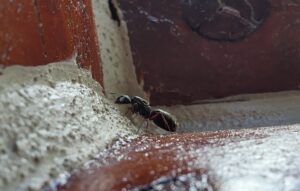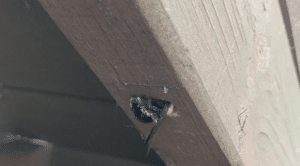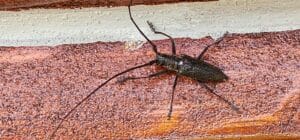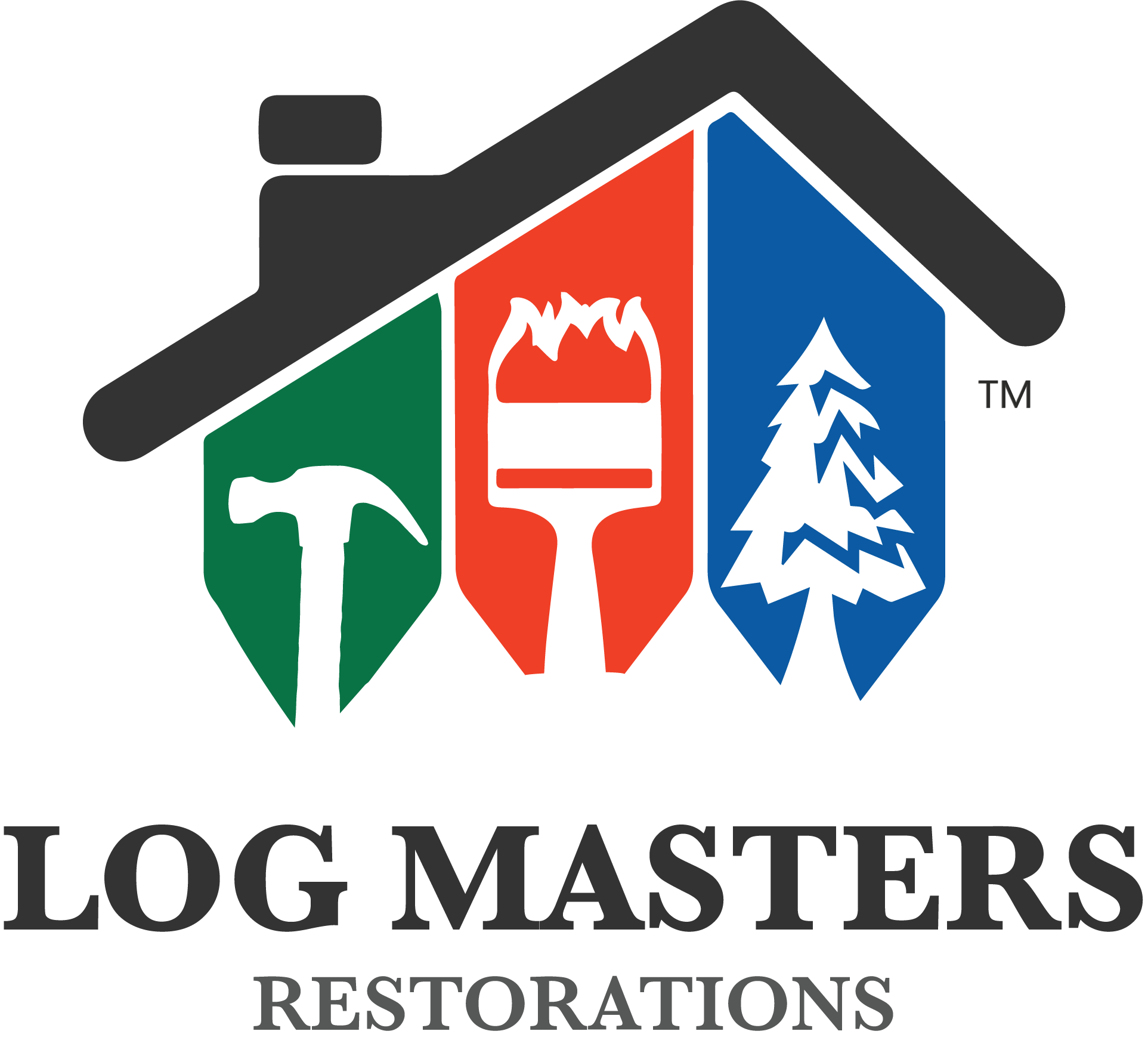A log cabin offers peace and rustic charm, but its wood structure often attracts unwanted pests. These invaders can damage wood, weaken structural integrity, and cause long-term issues if left untreated. Pest-proofing starts with understanding common threats like termites, carpenter ants, and rodents.
Regular inspections help catch early signs before problems grow. Sealing gaps, maintaining dry conditions, and keeping firewood away from the home reduce risk. Professional pest control adds another layer of defense. Use this guide to protect your cabin, extend its lifespan, and preserve your peaceful getaway.
Common Log Cabin Pests and How to Identify Them
Understanding common log cabin pests is the first step to protecting your log home. These invaders can cause severe structural damage over time. Knowing what to look for makes early detection easier and helps prevent long-term problems.
1. Termites
Look for mud tubes on foundations, hollow logs, or discarded wings near windows. Damage often remains hidden until it becomes severe. Termites feed constantly, weakening your cabin’s structure if not treated quickly.
2. Powder-Post Beetles
Watch for small round holes and fine sawdust on wood surfaces. These beetles tunnel through seasoned wood and return repeatedly. Their presence often goes unnoticed until the wood crumbles or feels soft.

3. Carpenter Ants
Look for piles of sawdust, rustling sounds inside walls, and visible ants near moist wood. These ants hollow out wood to nest, especially in decaying areas. While they don’t eat wood, their tunnels create serious structural risks.

4. Carpenter Bees
Spot perfectly round holes on wooden beams, especially on undersides or sheltered spots. These bees return each year, expanding their tunnels. Their activity often attracts woodpeckers, which adds more damage.

5. Old House Borers
Check for oval holes, gnawing noises, and tightly packed frass in older wood. These pests target seasoned lumber and dig long tunnels. Their damage allows moisture inside, leading to rot and decay.

How to Pest-Proof Log Cabins
Pest-proofing a log cabin begins with adopting proper habits and maintaining it regularly. Taking small steps now prevents major issues later. It’s essential to understand how pests enter your home.
Sealing Entry Points to Keep Pests Out
Even the most minor gaps can allow pests to enter your cabin. Sealing these access points is one of the most common defenses. Focus on vulnerable areas, such as foundations, joints, and utility openings. Use durable materials that withstand movement, moisture, and weather changes. Proper sealing helps block pest access and protects the structure throughout the year.
Protecting Your Wood from Insect Damage
Wood is the heart of every log cabin, but also attracts destructive insects. Preventing damage begins with proactive care. The right treatments and maintenance methods help protect the wood and strengthen your cabin.
Choosing the Right Wood Treatments
Using the proper wood treatment helps prevent insects from damaging your log cabin. These products create a protective barrier that insects can’t penetrate. Apply them at the right time and in the correct conditions for the best results.
- Borate-Based Preservatives: Apply these water-based treatments to bare, unfinished wood. They penetrate deep and disrupt insects’ ability to digest wood.
- Outlast Q8 Log Oil: This oil protects against termites, mold, and decay. Apply it by brush, spray, or roller to exposed surfaces.
- Application Timing: Treat during dry periods when wood moisture is low. These steps allow deeper absorption and longer-lasting protection.
Maintaining a Proper Stain and Sealant Regimen
Stains and sealants help preserve and protect your wood from sun and moisture damage. Regular upkeep extends the life of your log cabin’s exterior.
- Initial Application: After treating the wood, apply a stain with UV protection to reduce fading and surface breakdown.
- Maintenance Schedule: Reapply stain on sun-exposed walls every 2–3 years. Treat shaded walls every 3–5 years for consistent coverage.
- Application Technique: Apply stain in mild weather. Use the right brush type depending on the product—natural for oil, synthetic for water-based.
Preventing Moisture Buildup That Attracts Pests
Moisture invites wood-destroying insects into your log cabin. Keeping your home dry helps reduce pest activity and prevents structural damage.
- Proper Drainage: Maintain a 6-inch gap between soil and wood. Grade soil away from the cabin at a steady slope
- Ventilation Systems: Use ridge and soffit vents to improve attic airflow. Vent crawl spaces based on square footage to prevent dampness
- Gutter Maintenance: Clean gutters twice a year. Extend downspouts at least five feet away from your foundation
- Humidity Control: Keep indoor humidity between 30–50%. Use dehumidifiers in areas with moisture buildup
Seasonal Maintenance Checklist for Long-Term Pest Prevention
Spring (March-May)
- Conduct a thorough exterior inspection for cracks in logs and chinking
- Clean and repair gutters and downspouts
- Wash exterior logs with mild detergent to remove dirt, pollen, and insect eggs
- Look for signs of pest activity (sawdust piles, small holes, insect wings)
- Apply perimeter treatments and pest barriers
Summer (June-August)
- Monitor for carpenter bee activity around eaves and overhangs
- Check wood moisture content with a moisture meter (aim for below 20%)
- Trim vegetation to maintain at least 18 inches of clearance from cabin walls
- Reapply perimeter treatments in late summer (August)
- Inspect and clean outdoor lighting fixtures that attract flying insects
Fall (September-November)
- Conduct a second biannual pest inspection
- Clear leaf debris from the roof, gutters, and foundation perimeter
- Seal any new cracks or gaps before winter
- Store firewood at least 20 feet from the cabin, elevated 18 inches off the ground
- Check attic and crawl spaces for evidence of pest entry before winter
Winter (December-February)
- Monitor for rodent activity during colder months
- Inspect interior spaces, paying special attention to seldom-used areas
- Check the integrity of door sweeps and weather stripping
- Plan for any major pest prevention projects for the coming spring
When to Call a Professional for Pest Control
Some infestations require more than routine pest control measures. If pest activity persists or worsens, it may be time for expert help. Professionals can identify hidden issues and apply treatments beyond standard DIY solutions. Calling can prevent long-term damage and reduce future repair costs.
Warning Signs That Require Professional Intervention
Specific issues go beyond routine maintenance and signal the need for professional pest control. Recognizing these signs can prevent severe damage.
- Multiple Exit Holes: The presence of numerous insect holes often indicates an active infestation that requires expert inspection
- Structural Weakness: Hollow-sounding or soft logs suggest internal damage not suitable for DIY solutions
- Visible Mud Tubes: Pencil-width tubes on walls or foundations point to termites and need immediate professional treatment
- Persistent Infestations: If pests remain after a few weeks of treatment, it’s time to call in the pros
- Large-Scale Prevention: Homes over 1,500 square feet or in high-risk areas often benefit from professional prevention plans
When DIY Isn’t Enough
Professional pest control offers tools and techniques beyond what most homeowners can achieve. These services help protect log homes from deeper, ongoing infestations.
- Access to Commercial-Grade Products: Experts can apply more potent pesticides that are not available to the public
- Specialized Equipment: Tools like pressure injectors deliver treatment deep into the wood where pests hide
- Comprehensive Approach: Integrated pest management targets multiple threats more effectively than isolated treatments
- Early Detection Technology: Some professionals use infrared or sound-based tools to detect pests before damage occurs
Keep Your Log Cabin Pest-Free with Log Masters Restorations
Protecting your log cabin from pests requires more than a quick fix—it necessitates expertise, meticulous attention to detail, and the right tools. At Log Masters Restorations, we’ve spent over twenty years helping homeowners maintain strong, pest-free log homes. From early inspections to complete restoration, we know how to keep wood safe from unwanted damage.
Our certified team uses trusted products and proven methods tailored to your cabin’s needs. We offer comprehensive services, including sealing and staining, media blasting, chemical stripping, and log replacement. Whether your cabin needs routine upkeep or targeted pest control, we can help. We proudly serve Missouri, Arkansas, Tennessee, Illinois, Nebraska, Colorado, and Oklahoma. Let us preserve the beauty of your home and protect it for years to come.
